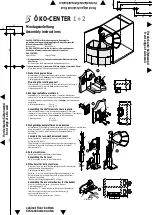
User Manual
iSiteC BTS3601C CDMA Base Station
System Description
Chapter 1 System Overview
1-17
III. Board level reliability design
Many measures have been taken in board design to improve its reliability.
Redundancy configuration is applied for key components to improve system reliability.
l
Key circuits are designed by Huawei, which lays the foundation of high reliability.
l
The hardware WATCHDOG is equipped for the board, and the board can
automatically reset in case of fault.
l
The board is provided with the functions of over-current and over-voltage
protection and the function of temperature detection.
l
Strict thermal analysis and simulation tests are conducted during the design of
boards for the purpose of ensuring longtime operation.
l
The board software and important data is stored in the non-volatile memory, so
that the board can be restarted when software upgrading fails.
IV. Fault detection, location and recovery
The BTS system is equipped with the functions of self-detection and fault diagnosis
that can record and output various fault information. Common software and hardware
faults can be corrected automatically.
The hardware fault detection functions include fault locating, isolating and automatic
switchover. The maintenance engineers can identify the faulty boards easily wi th the
help of the maintenance console.
The BTS3601C system also supports the reloading of configuration data files and
board execution programs.
V. Fault tolerance and exceptional protection
When faults occur, the system usually will not be blocked.
The system will make a final confirmation on a hardware fault through repeated
detection, thus avoiding system reconfiguration or QoS deterioration due to
contingent faults.
VI. Thermal design
The influence of temperature on the BTS3601C has been considered in the design.
Thermal design primarily concerns the selection of components, circuit design
(including error tolerance, drift design and derating design), structure design and heat
dissipation, so that the BTS3601C can work reliably in a wide range of temperatures.
The first consideration in thermal design is to balance the heat distribution of the
system. Corresponding measures are taken in the place where heat is more likely to
be accumulated.
















































